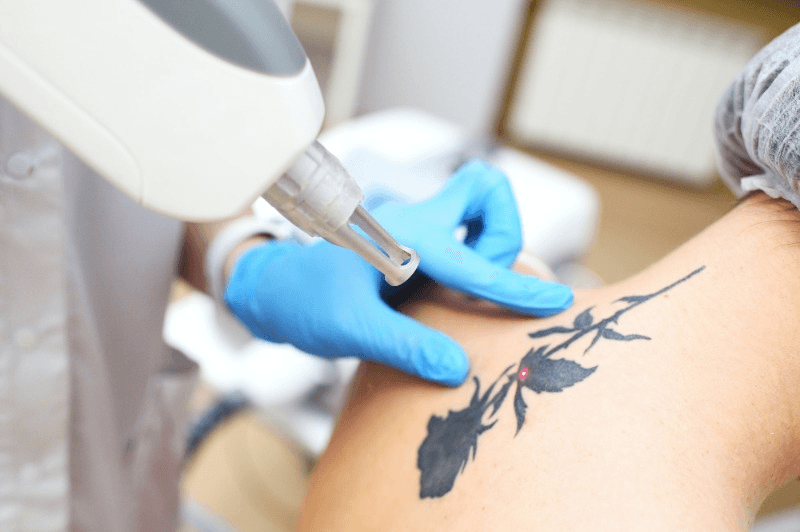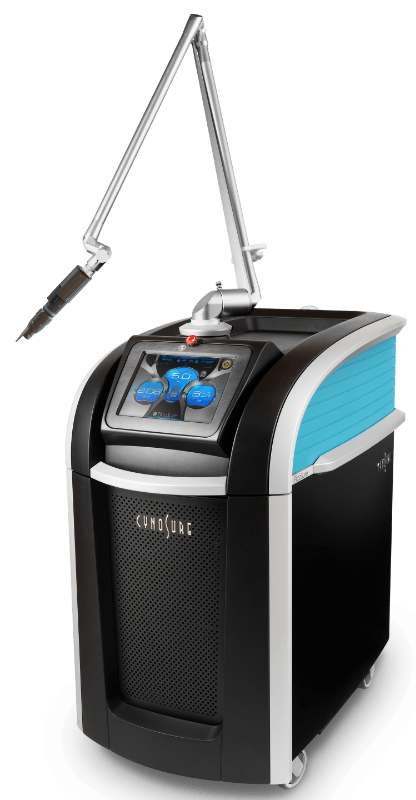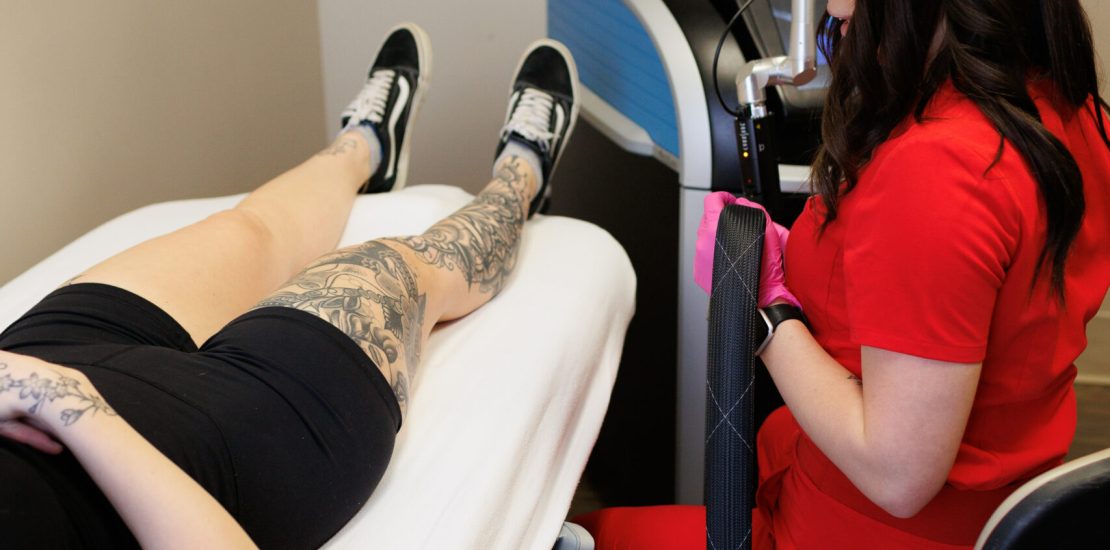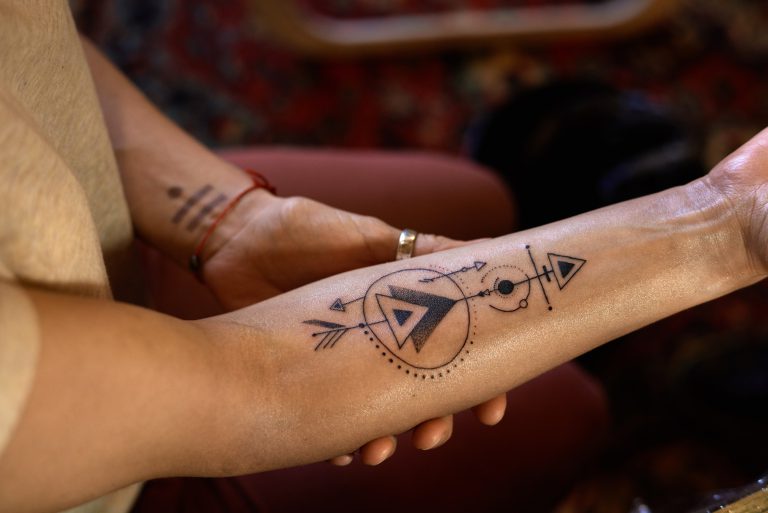Did you know that 25% of people regret getting a tattoo? If you find yourself in this group, fret not! Painless tattoo removal is now a reality. Say goodbye to unwanted ink without the agony. With advanced technology and skilled professionals, removing tattoos has never been easier. Imagine a clean canvas without the pain or hassle. Whether it’s a change in taste or a desire for a fresh start, painless tattoo removal offers a solution to your ink regrets. Discover how this innovative procedure can help you bid farewell to unwanted tattoos effortlessly.
Key Takeaways
- Opt for laser tattoo removal for a relatively painless and effective method.
- Prioritize clinics that offer numbing options like topical creams or cooling devices for enhanced comfort during the procedure.
- Understand the importance of managing expectations regarding the number of sessions required for complete tattoo removal.
- Research and compare different tattoo removal techniques to choose the most suitable option based on your tattoo size, color, and skin type.
- Stay informed about aftercare practices to promote faster healing and optimal results post-treatment.
- Consult with a qualified dermatologist or medical professional to discuss personalized tattoo removal plans tailored to your specific needs and goals.
Demystifying Painless Tattoo Removal
Does It Exist
Painless tattoo removal has seen significant advancements in recent years. New technologies like picoway laser have revolutionized the process, making it more comfortable. These advancements have made painless tattoo removal treatments a reality for many individuals.
The reality of painless tattoo removal options today is promising. Laser technology has become the go-to method for effective and safe tattoo removal processes. The use of advanced lasers ensures a more efficient and less painful experience for individuals seeking to remove unwanted tattoos.
The evolution of painless tattoo removal methods showcases the continuous improvement in tattoo removal techniques. From older, more invasive methods to modern laser treatments, the industry has come a long way. Today, individuals have access to safer and more comfortable tattoo removal sessions than ever before.
Common Myths
One common myth about painless tattoo removal is that it is entirely without discomfort. While advancements have reduced pain levels, some discomfort may still be experienced during the process. However, the pain associated with modern tattoo removal techniques is often manageable and temporary.
Another misconception is regarding the effectiveness of painless tattoo removal. Contrary to popular belief, laser tattoo removal is highly effective in gradually fading tattoos. Multiple sessions are usually required for complete removal, but the results are impressive and long-lasting.
Some people worry that getting a tattoo removed will be very painful. But actually, it’s not too bad for most people. The pain can be managed with numbing creams and cooling devices, making the process more comfortable.

Understanding Tattoo Removal
Process Overview
The painless tattoo removal process involves several key steps. First, the specialist assesses the tattoo to determine the best removal method. Next, laser technology targets the tattoo ink, breaking it into tiny particles that the body can naturally eliminate. Finally, over multiple sessions, the tattoo fades gradually.
In tattoo removal, lasers break tattoo ink into small pieces that the body’s immune system then removes gradually.
In painless tattoo removal treatments, there are distinct stages involved. Initially, the skin may blister or swell slightly post-treatment. Over weeks, the body eliminates the fragmented ink particles through the lymphatic system. With each session, more ink disperses until the tattoo is significantly faded or completely removed.
Session Details
Tattoo removal sessions can be quick or take longer, depending on the tattoo size and colors. Sessions usually happen every 4-6 weeks to give the skin time to heal.
During a typical painless tattoo removal session, patients may experience mild discomfort similar to rubber band snaps on the skin. The treated area may appear red and swollen immediately after treatment but subsides within a few hours. It’s crucial to follow post-care instructions diligently to aid healing and minimize any potential side effects.
Having many sessions is important for removing tattoos because some tattoos are harder to remove than others. Dark or deep tattoos need more sessions than light or shallow ones. Each session helps fade the tattoo until it’s gone.
Exploring Painless Methods
Cryoanesthesia Technique
Cryoanesthesia uses extreme cold to numb the skin for tattoo removal. It makes the skin colder, reducing pain and discomfort during the procedure. The cold also helps to shrink blood vessels, which can lessen swelling and bruising afterward.
- Benefits of Cryoanesthesia:
- Enhances Comfort: Cryoanesthesia enhances the overall comfort of patients during tattoo removal by significantly reducing pain levels.
- Speeds Up Recovery: The numbing effect of cryoanesthesia not only reduces pain during the procedure but also speeds up the recovery process afterward.
Surface Anesthesia
Surface anesthesia is like a numbing cream used before removing tattoos. It has ingredients that block pain signals in the skin, making the area numb. This helps people feel little to no pain during tattoo removal. Using surface anesthesia is important for a comfortable and painless tattoo removal experience.
- Role of Surface Anesthesia:
- Surface anesthesia is like a numbing cream used before removing tattoos. It has ingredients that block pain signals in the skin, making the area numb. This helps people feel little to no pain during tattoo removal. Using surface anesthesia is important for a comfortable and painless tattoo removal experience.
Targeted Energy
Targeted energy is a key element in laser tattoo removal, where high-energy laser beams are directed at specific wavelengths to break down tattoo ink particles. This precise targeting of energy helps in fragmenting the ink into smaller particles that can be naturally eliminated by the body’s immune system over time. The focused energy ensures that surrounding skin tissues remain unharmed during the tattoo removal process, leading to effective and painless treatment outcomes.
- Significance of Targeted Energy:
- Ink Fragmentation: Targeted energy plays a crucial role in breaking down tattoo ink particles into smaller fragments for easier elimination.
- Precision in Treatment: The precise targeting of energy ensures that only the tattoo pigment is affected, leaving surrounding skin tissues intact.

Comparing Removal Procedures
Pain Levels Analysis
Laser tattoo removal typically causes mild discomfort during the procedure, often compared to a rubber band snapping against the skin. Surgical removal, on the other hand, can be more painful due to the incisions made to extract the tattooed skin layers. Managing pain during these procedures is crucial for patient comfort and satisfaction.
- Laser removal involves short bursts of intense heat, targeting the ink particles beneath the skin, causing minimal pain.
- Surgical removal requires anesthesia and may result in soreness and discomfort post-procedure.
- Applying numbing creams or using cooling devices can help alleviate pain during and after both laser and surgical removal sessions.
Effective Techniques
The most effective technique for painless tattoo removal is often laser treatment, known for its precision in targeting specific ink colors without damaging surrounding skin. Laser removal boasts high success rates in fading or completely removing tattoos.
- Laser treatments have shown significant success in fading tattoos gradually over multiple sessions.
- Surgical removal, while effective, may leave scarring depending on the size and location of the tattoo.
- Choosing the right technique depends on factors like tattoo size, color complexity, and desired outcome for complete removal.
Patient Comfort Strategies
Comfort Measures
Patients undergoing painless tattoo removal procedures can benefit from various comfort measures. Cooling techniques are commonly used to alleviate discomfort during sessions. These methods involve applying cold air or using cooling devices to numb the skin, reducing pain sensations.
Numbing creams play a crucial role in minimizing pain during tattoo removal. These topical anesthetics are applied to the skin before the procedure to desensitize the area. By numbing the skin’s surface, patients experience reduced pain levels, enhancing their overall comfort throughout the treatment.
Pre and Post Care
Prior to tattoo removal sessions, pre-care preparations are essential for ensuring optimal results and minimizing discomfort. Patients are advised to avoid sun exposure and apply sunscreen to protect the skin. Hydrating the skin adequately before the procedure can also improve the healing process.
After tattoo removal, following post-care instructions is vital for promoting proper healing and preventing complications. Patients are typically advised to keep the treated area clean and dry, avoiding exposure to direct sunlight. Applying prescribed ointments or moisturizers can aid in soothing the skin and promoting faster recovery.
- Pros of Comfort Measures:
- Enhance patient experience
- Minimize discomfort during sessions
- Cons of Numbing Creams:
- Potential allergic reactions
- Temporary skin irritation

Real Results and Expectations
Session Frequency
Tattoo removal sessions are typically recommended every 6 to 8 weeks for optimal results. Factors like tattoo size, color, and skin type can influence the frequency. Scheduling regular sessions is crucial to prevent pigment reabsorption and achieve complete removal.
- Factors affecting session frequency:
- Tattoo size and complexity
- Skin type and color
- Location of the tattoo on the body
Expected Outcomes
Realistic expectations are essential for painless tattoo removal. Tattoos gradually fade over multiple sessions, with complete removal taking around 6 to 12 months. After each treatment, improvements in tattoo visibility become noticeable.
- Potential outcomes after each session:
- Lightening of tattoo pigmentation
- Reduction in tattoo size and clarity
- Skin healing and rejuvenation
Key Takeaways
Laser Removal
Laser removal is a popular way to eliminate tattoos. It utilizes high-energy light beams to break down the ink particles in the skin. This process is effective for fading or completely removing tattoos over multiple sessions. The system targets specific colors, making it versatile for different tattoo types.
Surgical Removal
Surgical removal, such as excision or dermabrasion, involves physically cutting out the tattooed part of the skin. While it may be more invasive than laser treatments, it offers a quicker way to get rid of unwanted ink. This process is suitable for small tattoos or individuals looking for immediate results.
Aftercare Importance
Proper aftercare plays a crucial role in the success of tattoo removal procedures. It helps in minimizing time taken for healing and reduces the risk of complications. Following post-treatment instructions, such as keeping the treated body part clean and moisturized, ensures optimal results.
Energy Levels
The effectiveness of tattoo removal depends on various factors, including the energy levels used during the procedure. Higher energy levels can lead to faster fading or removal of tattoos. However, it’s essential to balance energy levels to prevent skin damage or adverse reactions.
Pricing Factors
The price of painless tattoo removal varies based on factors like the size of the tattoo, the number of sessions required, and the technology used. Laser treatments are generally more expensive than surgical methods due to their precision and non-invasive nature.
Body Areas
Different body parts respond differently to tattoo removal treatments. Areas with more blood flow, like the arms and legs, tend to heal faster compared to regions with less circulation, such as the feet or hands. Understanding how each part of the body reacts can help manage expectations during the removal process.

Final Remarks
Now that you’ve delved into the world of painless tattoo removal, you’re equipped with the knowledge to make informed decisions. Understanding the various methods, comparing procedures, and considering patient comfort have provided you with a comprehensive view of what to expect. Remember, your comfort and satisfaction are paramount in this journey.
As you navigate the realm of tattoo removal, keep in mind the importance of consulting professionals for personalized advice. Your unique skin type and tattoo characteristics will influence the best approach for achieving optimal results. Stay informed, ask questions, and prioritize your well-being throughout the process.
Frequently Asked Questions
Is tattoo removal a painful procedure?
Tattoo removal procedures can cause some discomfort, but advancements in technology have led to the development of more painless methods. Techniques like laser removal and numbing creams help minimize pain during the process.
How long does it take to remove a tattoo completely?
The duration for complete tattoo removal varies depending on factors like tattoo size, ink colors, and individual skin response. On average, multiple sessions spaced several weeks apart are needed for optimal results, with most tattoos requiring 5-10 sessions.
Are there any risks or side effects associated with tattoo removal?
While rare, risks such as scarring, infection, or changes in skin texture/color may occur. It’s crucial to consult a qualified professional for an assessment before undergoing tattoo removal to discuss potential side effects and ensure proper aftercare.
Will my skin look the same after tattoo removal?
After successful tattoo removal, your skin will appear clearer and smoother at the treated area. However, some individuals may experience minor changes in skin texture or color. Following post-treatment care instructions diligently can help promote optimal healing and skin rejuvenation.
Can all types of tattoos be removed painlessly?
Most tattoos can be effectively removed using advanced techniques like laser removal, which is relatively less painful compared to traditional methods. However, factors like tattoo size, ink colours, and skin type play a role in determining the level of discomfort during the removal process.
Not what you were looking for? Fading Regrets also offers the following services:
Expert Laser Tattoo Removal
Permanent Makeup Removal
Fading for Cover-Ups
Looking for more? Check out the following links for more info:
Wikipedia on tattoo removal
Health Canada on Cosmetic Laser Treatments
Tattoo Removal – MyHealth Alberta



